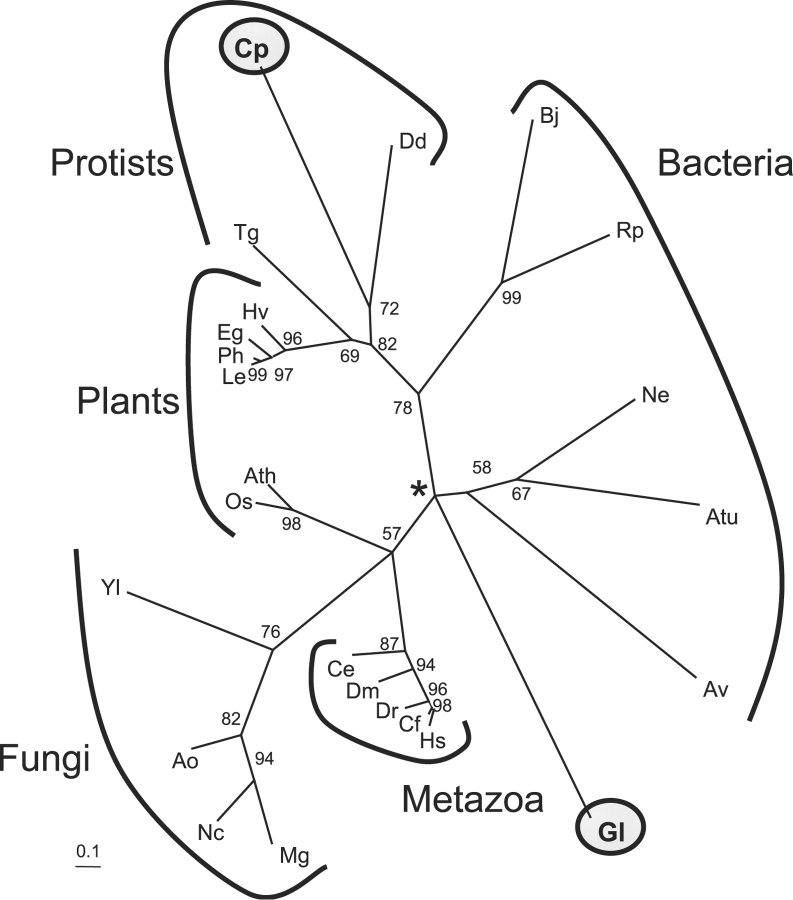Fig. 2.
Phylogenetic analyses suggest a unique origin of the Giardia (Gl) OGT, while OGTs of Cryptosporidium (Cp), Toxoplasma (Tg), and Dictyostelium (Dd) share a common origin with each other. The phylogenetic tree of selected protist, fungal, plant, metazoan, and bacterial OGTs was constructed using the maximum likelihood method. OGTs of Giardia and Cryptosporidium, which were tested here, are highlighted by shaded circles. Lengths of branches are proportional to differences between sequences, while numbers at nodes refer to bootstrap values for 100 trees. Asterisk indicates unresolved central node in this star-shaped tree, so that it is not possible to determine the ancestry of the Giardia OGT. Metazoa include Caenorhabditis elegans (Ce), Canis familiaris (Cf), Drosophila melanogaster (Dm), Danio rerio (Dr), and Homo sapiens (Hs). Fungi include Aspergillus oryzae (Ao), Neurospora crassa (Nc), Magnaporthea grisea (Mg), and Yarrowia lipolytica (Yl). Plants include Arabidopsis thaliana (Ath), Eustoma grandiflorum (Eg), Hordeum vulgare (Hv), Lycopersicon esculentum (Le), Oryxa sativa (Os), and Petunia hybrida (Ph). Bacteria include Anabaena variabilis (Av), Agrobacterium tumefacience (Atu), Bradyrhizobium japonicum (Bj), Nitrosomonas europaea (Ne), and Rhodopseudomonas palustris (Rp).

